#Leanthinking
Explore tagged Tumblr posts
Text
Every Business Needs Chat Moderation
Chat moderation is a simple first step in creating a strong online community. When moderating discussions in product forums and support chats, it's more crucial to foster loyalty and trust than it is to simply filter information. ✅ Better brand perception ✅ Increased retention ✅ Safer environments Does your conversation strategy align with your brand's values? Read More-https://oragetechnologies.com/chat-moderation/
0 notes
Text
The Role of Lean Six Sigma in BPO

Introduction
The current hyper-competitive global economy has seen Business Process Outsourcing (BPO) companies constantly compelled to enhance efficiency, quality of service, and cost of operations. One such approach that has proved most helpful in their accomplishment is Lean Six Sigma. Combining the use of Lean principles and Six Sigma tools assists BPOs in streamlining processes, avoiding waste, and ensuring quality. This article examines the significant influence of Six Sigma in BPO, touching on its advantages, execution methods, and practical implications.
What is Six Sigma in BPO?
Six Sigma in BPO means the implementation of Six Sigma methodology within the BPO sector for enhancing processes by finding and removing defects. Six Sigma implements data-driven methods and statistical techniques to induce process improvements and boost performance. When integrated with Lean, which ensures waste minimization and efficiency, it becomes a driving force for transformation.
Key Components of Six Sigma in BPO
DMAIC Framework: Define, Measure, Analyze, Improve, and Control. The five-step process enables BPOs to isolate problems, and root causes, and find sustainable solutions.
Customer-Centric Approach: It makes sure that customer expectations and needs are met through the services offered.
Data-Driven Decisions: Dependence on data and analysis guarantees unbiased problem-solving.
Advantages of Six Sigma in BPO
Improved Quality
One of the major objectives of Six Sigma is to eliminate variability and defects. In the case of BPOs, this implies less error in customer support, data processing, and transactional operations.
Higher Efficiency
Lean Six Sigma eliminates non-value-added activities and processes, resulting in quicker turnaround and processing times.
Reduction in Costs
Through the elimination of errors and enhanced processes, BPOs are able to considerably reduce operational expenditure, thus enhancing profitability.
Enhanced Customer Satisfaction
Improved quality service and prompt delivery mean enhanced client satisfaction and retention.
Employee Engagement
Engaging employees to be involved in process improvements generates a continuous improvement and innovation culture.
How to Implement Six Sigma in BPO
Top-Down Commitment
There has to be top management support for the successful implementation of Six Sigma. Senior management should give clear objectives and define resources.
Training and Certification
Employees need to be trained in Lean Six Sigma, such as Yellow Belt, Green Belt, and Black Belt certifications, to acquire the skills.
Project Selection
Select projects that have a measurable impact and support business objectives. Analyze data to determine areas of greatest potential for improvement.
Cross-Functional Teams
Cross-functional teams ensure a variety of viewpoints are accounted for, leading to better solutions.
Continuous Monitoring
After implementation, continuous monitoring and control must be implemented to maintain improvements and accommodate changes.
Case Studies: Six Sigma's Real-World Impact in BPO
Customer Support Optimization
One of the top BPO companies applied Six Sigma to decrease the average handling time of its customer support unit. By finding the root causes of delay and applying specific training, it lowered handling time by 25%, dramatically improving customer satisfaction.
Data Entry Accuracy
Another BPO applied Lean Six Sigma to eliminate high error rates in data entry. They cut their errors by 40% through process reengineering and automation.
Billing Process Improvement
A company that outsourced finance used Six Sigma to improve its billing process. They improved invoice discrepancies by 60%, resulting in faster payment and better cash flow.
Challenges in Implementing Six Sigma in BPO
Resistance to Change
Employees can resist changes because they are unfamiliar or fear job loss. Communication and participation are necessary.
Initial Investment
Six Sigma implementation takes time and money investment in training and instruments. But long-term returns typically exceed initial outlays.
Data Limitations
Incomplete or wrong data can stifle analysis and decision-making. Strong systems of data collection are imperative.
Future of Six Sigma in BPO
As BPOs keep changing with digital innovation and automation, Six Sigma will continue to be a core driver of operational excellence. The synergy between AI and machine learning, and Six Sigma tools promises even more avenues for wise process improvement.
Conclusion
The adoption of Six Sigma for BPO operations has emerged as a cornerstone for attaining excellence, cost reduction, and increased client satisfaction. By implementing a culture of ongoing improvement and data-driven initiatives, BPO companies can remain competitive in a changing environment. From error reduction in processes and faster response times to workflow optimization, Lean Six Sigma continues to redefine the BPO environment for the better.
#SixSigmaInBPO#LeanSixSigma#BPOIndustry#ProcessImprovement#QualityManagement#OperationalExcellence#SixSigmaCertification#BPOTrends#BusinessProcessOutsourcing#ContinuousImprovement#EfficiencyMatters#BPOInnovation#DMAIC#LeanThinking
0 notes
Text

🌟 Become a Lean Practitioner and Lead the Change! 🌟
Are you ready to drive efficiency, eliminate waste, and improve organizational processes? Join our Live Online Instructor-Led Lean Practitioner Certification Training Program and gain the skills to implement Lean principles in your organization successfully.
Key Highlights:
✅ Instructor-Led Training: Engage in live, interactive sessions with expert Lean practitioners.
✅ Hands-on Learning: Apply Lean tools and techniques to real-world projects and case studies.
✅ Comprehensive Curriculum: Learn about Value Stream Mapping, 5S, Kaizen, Waste Reduction, and more.
✅ Global Certification: Earn an internationally recognized Lean Practitioner certification.
✅ Flexible Schedule: Learn at your own pace, with live online classes that fit your schedule.
💡 Why Choose Our Program?
Learn directly from experienced Lean professionals.
Access to exclusive study materials and resources.
Ongoing support and guidance even after the course ends.
Lifetime access to recorded sessions for review.
#LeanPractitioner#LeanCertification#ProcessImprovement#WasteReduction#Efficiency#LeanTools#5S#Kaizen#ValueStreamMapping#ContinuousImprovement#LeanTraining#BusinessExcellence#LeanThinking
0 notes
Text
Kaizen Process Flow: Turning Employee Ideas Into Measurable Improvements

In today’s fast-moving business world, improvement isn’t a one-off project—it’s a daily habit. That mindset aligns perfectly with Kaizen process steps, the Japanese practice of pursuing small, steady gains.
At its heart, Kaizen empowers every employee to:
Spot waste
Suggest improvements
Experiment with changes
But to turn these ideas into measurable results, organisations must follow a clear process. That’s where the Kaizen process flow comes in.
🔄 What is the Kaizen Process Flow?
The Kaizen process flow is a structured method to:
Collect improvement ideas
Evaluate and implement them
Measure their impact
Lock in successful changes
It ensures good ideas don’t just sit in a suggestion box—they lead to real improvements.
✅ Step-by-Step Kaizen Process Flow
Step 1: Identify the Problem or Opportunity
Employees observe and report issues such as:
High defect rates
Delays in handoffs
Scrap generation
Extra steps with no value
🔍 Example: An operator notices time lost walking to fetch tools during every shift.
Step 2: Build a Diverse Kaizen Team
Form a small team that includes:
Operators
Supervisors
Maintenance staff
Quality representatives
👥 Purpose: Combine practical knowledge with process awareness.
Step 3: Map the Current Process
Use tools such as:
Gemba Walks (observe the actual work)
Process Mapping
Value Stream Mapping (VSM)
🧠 Goal: Identify delays, redundancy, or unnecessary motion.
Step 4: Brainstorm and Filter Solutions
Encourage the team to propose:
Quick fixes
Low-cost ideas
Small improvements
Use filters like:
Safety
Cost
Implementation time
Impact on quality and customer experience
Step 5: Implement the Best Idea
Move quickly on the selected solution
Apply the PDCA cycle:
Plan: Outline the change
Do: Test it on a small scale
Check: Monitor the results
Act: Adjust and implement full-scale
Step 6: Measure the Results
Use Key Performance Indicators (KPIs) such as:
Time saved per task
Reduction in defects
Scrap reduction
Employee satisfaction
📊 Remember: What gets measured gets improved.
Step 7: Standardize the Improvement
If successful, update:
Work instructions
SOPs
Visual guides
Checklists
✅ Goal: Ensure sustainability and consistency.
Step 8: Recognize and Repeat
Publicly acknowledge the contributors through:
Recognition boards
Team emails or newsletters
Verbal appreciation in meetings
🎉 Why? Recognition builds momentum and engagement.
💡 Why This Kaizen Process Flow Works
Empowers Employees: The people closest to the problem help create the solution.
Reduces Waste: Removes non-value-adding steps and boosts efficiency.
Creates a Culture of Continuous Improvement: Everyone becomes a stakeholder in improvement.
Improves Morale: Employees feel heard, valued, and trusted.
🛠 Real-World Example:
A Tier-1 automotive supplier struggled with frequent tool misplacements. During a Kaizen event, frontline staff suggested installing magnetic strips at each workstation.
Results:
🔧 Tool search time reduced by 85%
⏱ Line downtime dropped by 20%
😊 Operators reported better workflow and fewer delays
All this from a simple, low-cost idea—because of a clear and consistent Kaizen process.
🧭 Final Takeaway
Kaizen isn’t about perfection—it’s about steady, manageable progress. With the right process in place, even the smallest employee idea can lead to meaningful, measurable improvement.
When improvement becomes part of the daily routine, your workforce transforms into your strongest driver of operational excellence.
#Kaizen#LeanThinking#ContinuousImprovement#OperationalExcellence#ProcessImprovement#ManufacturingSuccess#QualityManagement#kaizenprocesssteps
0 notes
Text
Lean Management Consulting: Building a Culture of Continuous Improvement
In today’s volatile and complex business environment, organizations must be agile, efficient, and relentlessly focused on customer value. That’s where Lean Management comes into play—not just as a toolkit, but as a transformational management system.
At Seicho Consulting, we don’t just implement Lean—we help you build a culture of continuous improvement that drives strategic outcomes, enhances operational performance, and engages people at every level.
🚀 What is Lean Management?
Lean Management is more than reducing waste—it's a mindset.
It’s about:
Aligning strategy with execution
Empowering people to solve problems at the source
Structuring operations to flow smoothly
Delivering consistent value with minimal effort and resources
Whether you’re a manufacturer, service provider, or administrative organization, Lean helps you transform how your teams think, act, and grow.
🔧 Our Lean Management Services
At Seicho Consulting, we offer a full suite of Lean Management Consulting solutions tailored to your industry, scale, and growth stage:
✅ Lean Transformation Strategy & Roadmap
We co-create a structured rollout plan for Lean adoption, fully aligned with your long-term business objectives.
✅ Leadership Coaching & Change Management
We guide your leadership team in becoming Lean change agents, ensuring transformation is not just top-down but sustainable.
✅ Gemba Walks & Visual Management Systems
We improve transparency and accountability with on-site observation and visual systems that expose process gaps and flow inefficiencies.
✅ Team Engagement & Problem Solving Skills
Empowered teams drive improvement. We help your staff build the capability to identify and eliminate problems at the root.
✅ KPI Development & Performance Tracking
We design clear, actionable KPIs that reflect true business performance and guide real-time decision-making.
✅ Layered Audits & Sustainment Plans
Lean doesn’t end with implementation. We install a structured audit and sustainment system to protect and evolve your Lean culture.
🏭 Industries We Serve
Our Lean Management approach has helped transform:
Manufacturing & Process Industries
Healthcare & Service-based Organizations
Administrative & Office Functions
SMEs and Corporates seeking cultural change
Whether you’re improving shop floor operations or streamlining service workflows, Lean principles are universally applicable.
📈 The Impact of Lean Management
By applying Lean thinking across your value stream, you unlock:
🔄 Reduced operational waste
⚡ Faster and more consistent output
🧠 Increased employee ownership and problem-solving
📊 Data-driven agility and continuous learning
💰 Higher value at lower operating costs
🌟 Why Choose Seicho Consulting?
What sets us apart is our depth and discipline:
✔ Hands-on experience across 50+ organizations
✔ Custom strategies for your industry, size, and structure
✔ Integration with TPM, 5S, VSM, TQM, and ERP systems
✔ Focus on culture transformation, not just tool implementation
✔ Tactical and strategic approach—ground-level change backed by C-suite alignment
💬 Let’s Build Your Lean Culture
Lean isn’t a one-off initiative. It’s a way of thinking, managing, and leading. If you're looking to make your organization more efficient, more engaged, and more aligned with customer value—we’re ready to help.
📞 Contact Seicho Consulting today to schedule a consultation and start your journey toward continuous improvement.
#LeanManagement#LeanManagementConsulting#ContinuousImprovement#OperationalExcellence#BusinessTransformation#LeanThinking#ProcessImprovement#Kaizen#GembaWalk#VisualManagement#LeanCulture#LeadershipDevelopment#SeichoConsulting#WasteReduction#LeanStrategy#BusinessConsulting#ChangeManagement#ProductivityImprovement#ManufacturingConsulting#ServiceExcellence
0 notes
Text
Lean Portfolio Management (LPM) is an approach that aligns strategy, funding, and execution to enhance business agility. It applies Lean and Agile principles to portfolio management, ensuring organizations can adapt to change quickly and deliver continuous value to customers.
Key Principles of Lean Portfolio Management
Align Strategy with Execution – Ensure that every initiative aligns with business objectives.
Implement Lean Budgeting – Shift from project-based to Lean funding to improve agility.
Emphasize Continuous Improvement – Use feedback loops to optimize processes and outcomes.
Enable Decentralized Decision-Making – Empower teams to take ownership of their work.
Foster Collaboration – Break down silos and encourage cross-functional teamwork.
Measure Outcomes, Not Output – Focus on delivering customer value rather than simply completing tasks.
Use Agile Portfolio Operations – Optimize value streams to maximize efficiency.
#LeanPortfolioManagement#SAFeLeanPortfolioManagement#ScaledAgileFramework#LeanAgile#AgilePortfolio#BusinessAgility#LPM#LeanGovernance#AgileTransformation#PortfolioManagement#SAFe#LeanThinking#ICAgile#LeanBudgeting#ContinuousImprovement
0 notes
Text
In today’s fast-moving digital world, businesses gotta stay quick on their feet to keep up with what customers want and what’s happening in the market. That’s why agile product development is the way to go for companies wanting to create software that’s both scalable and made right. Unlike the old school methods, Agile is all about being flexible, making steady progress, and working together to get the best results. From MVP development to product iteration, this approach lets businesses keep tweaking their products and ahead of the game.
#AgileDevelopment#ProductDesign#BusinessGrowth#ModernBusiness#Startups#SoftwareEngineering#ProjectManagement#ScrumMethodology#DigitalStrategy#AgileWorkflow#Entrepreneurship#TechTalk#InnovationInTech#LeanThinking
1 note
·
View note
Text
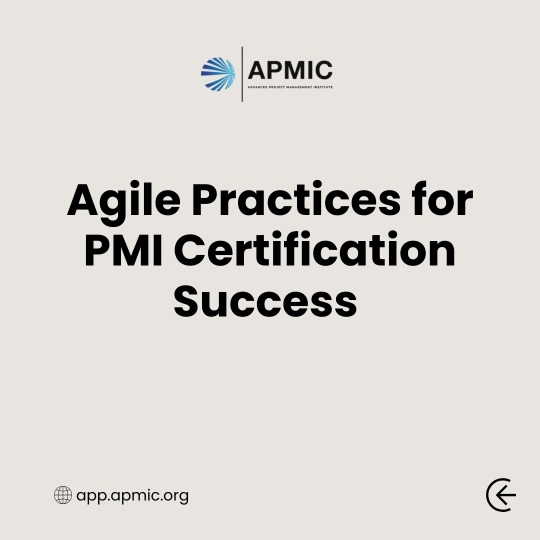
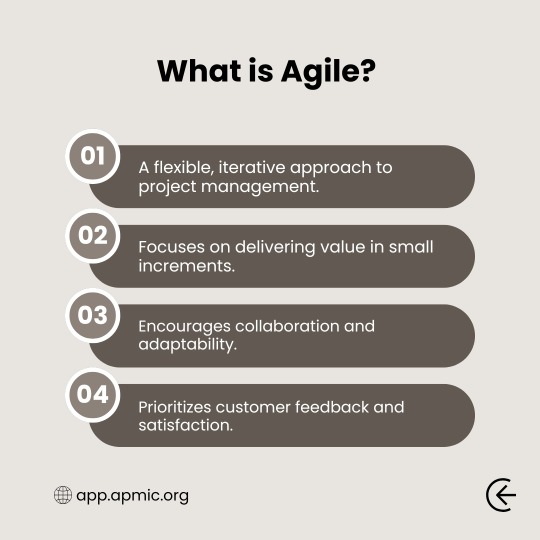
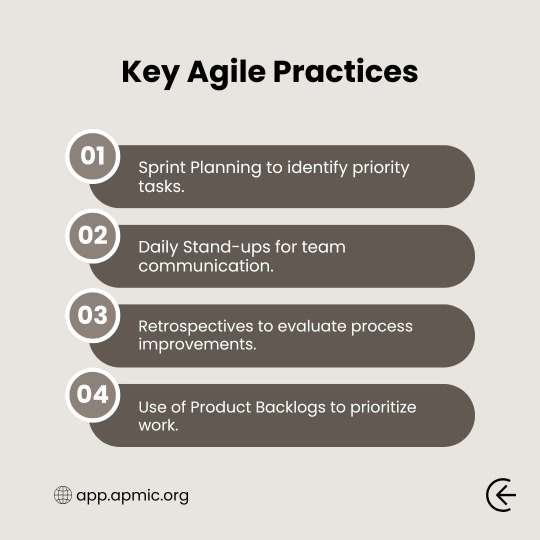
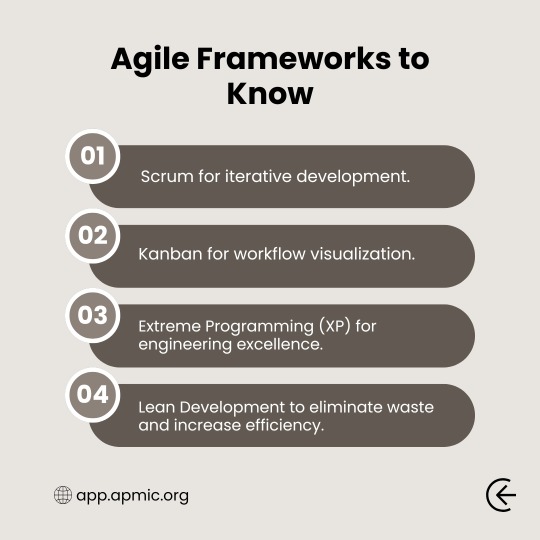
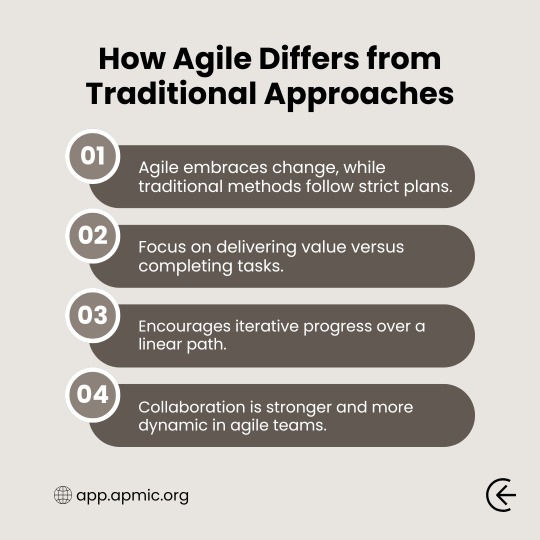
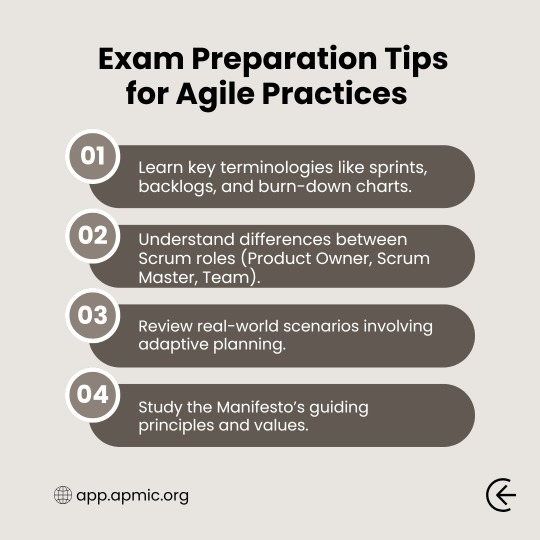
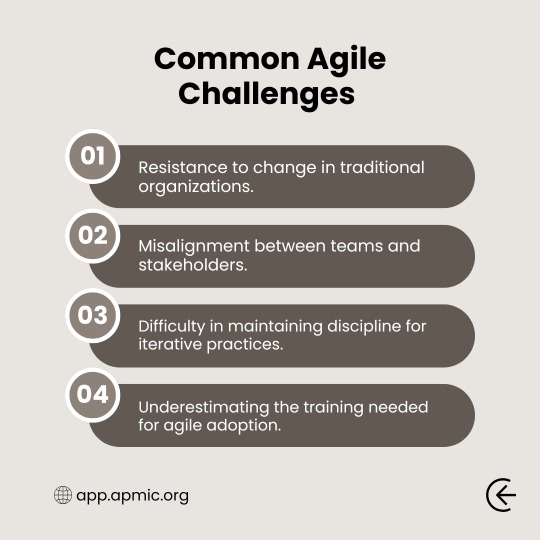
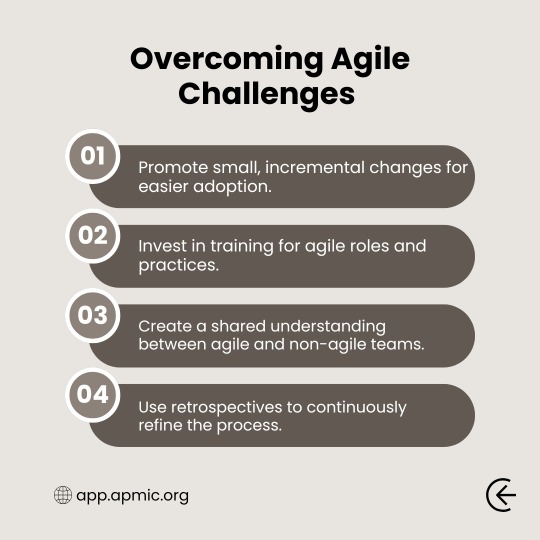
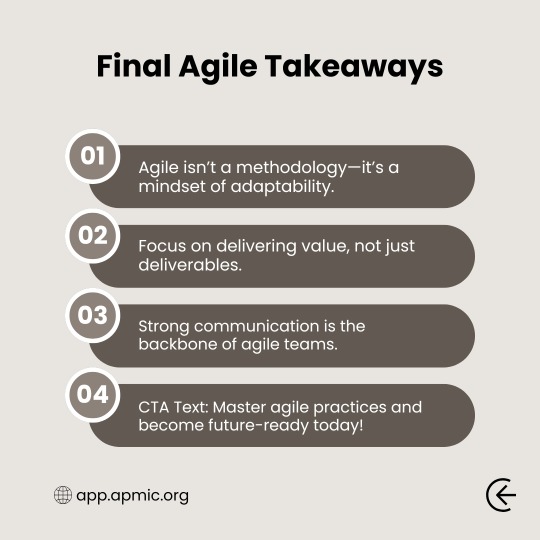

Master Agile for PMI Certification Success! 🚀
Agile is a game-changer in project management! ✅ It’s a flexible, value-driven approach that helps teams deliver efficiently.
🔹 Why Agile? ✔️ Breaks work into small, manageable increments 📊 ✔️ Encourages collaboration & adaptability 🤝 ✔️ Focuses on customer feedback & satisfaction
🔹 Key Agile Practices: 📌 Sprint Planning to prioritize tasks 📌 Daily Stand-ups for team updates 📌 Retrospectives to improve processes 📌 Backlogs to manage workflow efficiently
💡 Pro Tips for PMI Success: ✔️ Learn Agile frameworks: Scrum, Kanban, Lean 🏆 ✔️ Understand Scrum roles & responsibilities 🔍 ✔️ Embrace change & continuous improvement 🔄
🌐 Visit: app.apmic.org
Start your Agile journey today! 🚀
#agilemindset#projectmanagement#PMI#PMP#agileleadership#scrummaster#agilecoach#PMO#teamcollaboration#businesssuccess#leadershipdevelopment#agileframework#agiletransformation#productivityhacks#processimprovement#worksmartnothard#timemanagement#projectmanagerlife#successmindset#leanthinking#dailystandup#efficiency#sprintplanning#careergrowth#professionaldevelopment#agilesuccess
0 notes
Text

What if Love followed Lean Principles? A Lean Love Story!
For more details read our article:
#LeanLove#LeanValentine#LeanThinking#LeanLeadership#LeanPrinciples#KaizenCulture#ValueStream#LeanTransformation#LeanJourney#ProcessEfficiency#LeanInnovation#LeanSuccess#LoveWithLean#ContinuousImprovement#LeanMindset#HoshinKanri#EliminateWaste#FlowEfficiency#ValentinesDay2025#leantransitionsolutions#lts
0 notes
Text

🚀 In the fast-paced world of project management, staying organized and adaptable is crucial. That's where Scrum shines! Let’s dive into how you can efficiently manage a Scrum project using Vabro, a versatile tool designed for today’s dynamic teams.
🔍 Why Scrum?
Iterative cycles for constant feedback
Transparency, inspection, and adaptation
Promotes collaboration and continuous improvement
🔧 Why Vabro?
Seamless integration with tools like Slack, GitHub, and JIRA
User-friendly interface to get your team up and running quickly
Comprehensive features for task management, collaboration, and analytics
👥 Getting Started with Vabro:
Sign up and create your project.
Customize it to match your needs.
Define roles and kick off your first sprint!
Transform your Scrum projects with Vabro and experience enhanced efficiency and productivity. Ready to revolutionize your workflow? 🌟
Learn more at vabro.com
#Agile#Scrum#ProjectManagement#TeamCollaboration#Vabro#Productivity#SoftwareDevelopment#LeanThinking#ContinuousImprovement#Innovation
0 notes
Video
youtube
Lean Manufacturing Einfach Erklärt 0002 Produkttester Review Deutsch
#youtube#leanmanufacturing#einfacherklärt#effizienzsteigerung#qualitätsverbesserung#prozessoptimierung#produktionsrevolution#schlankundeffektiv#leanthinking#arbeitsablauf#leanprinzipien
0 notes
Video
youtube
Eliminating Defect Waste: Mastering Lean Management Principles #learn #u...
#youtube#leanmanagement leanmanufacturing lean leanthinking iso kaizen projectmanagement leansixsigma s leadership sixsigma leadershipdevelopment man
1 note
·
View note
Text
How Lean Six Sigma Yellow Belt Certification Empowers Remote Work Efficiency in 2025
The rise of hybrid and remote work models has completely transformed how teams collaborate, deliver value, and improve processes. In this evolving landscape, the Lean Six Sigma Yellow Belt Certification has emerged as a powerful tool for professionals seeking to drive productivity and eliminate inefficiencies no matter where they work.
The LSSYB Certification equips individuals with a proven problem-solving methodology that fits seamlessly into virtual environments. By mastering the basics of Lean and Six Sigma, professionals gain the skills to make meaningful process improvements, even when managing projects remotely.
1. Streamlining Virtual Workflows with Lean Tools
One of the core teachings of Lean Yellow Belt Certification is identifying and eliminating waste. In remote work settings, “waste” often comes in the form of unclear processes, overcommunication, duplicated work, or poor time management.
By using value stream mapping and other Lean tools, professionals can analyze virtual workflows, pinpoint where digital bottlenecks exist, and design smarter, more efficient systems that enhance team output without burnout.
2. Enhancing Accountability in Distributed Teams
Remote work requires clear roles, data transparency, and measurable outcomes. The Six Sigma Yellow Belt Certification teaches how to implement metrics and process controls that keep teams aligned and accountable.
Whether it’s tracking project timelines or measuring productivity in real time, Yellow Belt professionals are equipped to drive clarity and structure across departments even when spread across different locations and time zones.
3. Applying DMAIC to Remote Work Challenges
The DMAIC framework (Define, Measure, Analyze, Improve, Control), central to the LSSYB Certification, is especially effective for remote work challenges. From improving virtual onboarding to reducing delays in online collaboration tools, Yellow Belts use DMAIC to identify problems, test solutions, and maintain consistency over time.
This structured approach helps businesses improve performance, enhance user experience, and reduce rework in digital operations.
4. Promoting Cross-Functional Collaboration
With team members no longer sharing office spaces, collaboration can suffer. Lean Six Sigma Yellow Belt Certification promotes a culture of continuous improvement where everyone is encouraged to contribute ideas, share data, and work toward common goals digitally.
Yellow Belt holders can lead or support virtual Kaizen events, improvement sprints, or feedback loops that bring departments together for process optimization, even without physical interaction.
In 2025, remote and hybrid work models are not just trends, they're the new standard. The Lean Six Sigma Yellow Belt Certification offers a robust foundation for navigating this shift. From reducing digital clutter to boosting efficiency and fostering collaboration, LSSYB Certification ensures professionals are not just keeping up, but thriving in the remote work revolution.
#LeanSixSigmaYellowBelt #LSSYB #RemoteWork2025 #VirtualEfficiency #SixSigmaCertification #LeanYellowBelt #RemoteProductivity #ProcessImprovement #WorkFromAnywhere #HybridWorkSuccess #DMAICinRemoteWork #LeanThinking
For more details : https://www.gsdcouncil.org/certified-lean-six-sigma-yellow-belt-certification
Contact no : +41 41444851189
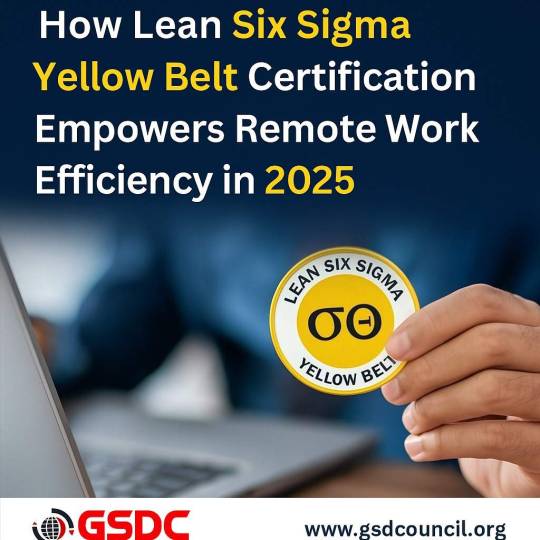
0 notes
Text
Kaizen in action, 私❤️改善. 🌐https://pin.it/1tu5ctVnq 🌐https://lnkd.in/eaRwEgdC 🌐https://lnkd.in/dc-iH2V4
🏆 [Qualidade e Reconhecimento] 500 Melhores Galpões de Alto Padrão tipo A e AAA na Bahia e Brasil, Melhor Custo Benefício - ADM Mello Galpões.
🌐 [Site Oficial] WWW.MELLOIMOVEIS.COM
📦 [Flexibilidade e Personalização] Está buscando galpões logísticos e industriais para alugar, comprar ou construir sob medida - BTS e Sale & Lease Back para empresas de 1ª linha.
📍 [Experiência e Liderança] A Mello Galpões é reconhecida pela experiência em soluções em grande escala para empresas que buscam otimizar sua cadeia de suprimentos e operações logísticas. Sua liderança se destaca pelo desenvolvimento de imóveis de alto padrão com especificações técnicas modernas.
🛣️ [Infraestrutura e Localização Estratégica] Construção de galpões em locais estratégicos, próximos a centros logísticos, rodovias e portos, garantindo conectividade para distribuição e transporte.
🏢 [Soluções Sob Medida] Galpões modulares, flexíveis e adaptáveis, projetados para atender desde pequenas empresas até multinacionais com demandas específicas.
💡 [Inovação e Sustentabilidade] Investimento em tecnologia e práticas sustentáveis, com uso de tecnologias de baixo consumo energético, gestão de resíduos e otimização de espaços.
🌎 [Expansão Nacional] Presença em diversas regiões do Brasil, consolidando liderança no setor de galpões: BA, SP, RJ, CE, SE, PR, SC, AL, PA, MA, PE, DF, GO, RS, MG, SC, ES e em todo Brasil
🏗 [Qualidade Premium e Sustentabilidade] Galpões Logísticos, Industriais e Comerciais tipos A e A+ . Centros de Distribuição varejo online: Mercado Livre lidera expansão logística e responde por 40% das locações em centros de distribuição do varejo online
O Mercado Livre se destaca como protagonista no mercado logístico brasileiro, sendo responsável por impressionantes 40% das locações de centros de distribuição no setor de varejo e comércio eletrônico. A companhia já ocupa 1,2 milhão de metros quadrados em espaços logísticos.
Desde o início de 2020, a área total locada pela varejista apresentou um crescimento expressivo de 642%, conforme aponta pesquisa da consultoria Binswanger. Esse avanço reflete a estratégia agressiva da empresa em expandir sua infraestrutura para atender à crescente demanda do e-commerce.
Logo atrás no ranking das empresas de comércio eletrônico com maior volume de espaços alugados estão gigantes como Amazon, Magazine Luiza, B2W, Via, Shein e Shopee, que também têm investido fortemente em logística para aprimorar a eficiência das operações e acelerar as entregas #Lean #LeanThinking #Inovação #LeanManufacturing #tecnologia Leia #EXAME
🔗 https://bit.ly/4j9vSPy
#galpões#aluguel de galpoes em feira de santana#galpões em fortaleza#galpões em lauro de freitas#aluguel de galpoes salvador#galpoes em feira#adm mello galpoes#mello galpoes#att camacari#youtube
0 notes
Text

Quando si procrastina, si tende a rimandare il completamento di compiti, spesso dedicando tempo ad attività meno urgenti o addirittura evitando del tutto di affrontare ciò che è necessario fare.
Questo comportamento può portare a un accumulo di lavoro, riducendo la produttività complessiva non solo personale, ma anche dei colleghi con cui il proprio lavoro si intreccia.
In una logica di team working, questo aspetto viene talvolta sottovalutato.
#leanthinking #timemanagement #kaizenpeoplesrl #metodokp #business #teamwork
0 notes
Text
Lean Strategy Implementation: Transform Your Business with Seicho Consulting
In a rapidly evolving world, operational excellence is no longer a luxury—it’s a necessity. Whether you’re a large manufacturer or a growing enterprise, the need to deliver faster, smarter, and leaner is universal. That’s where Lean Strategy Implementation by Seicho Consulting comes in.
At Seicho, we don’t just help you remove inefficiencies—we help you reshape your business to thrive.
💡 What is Lean Strategy?
Lean is more than a toolbox—it’s a strategic umbrella that shields your business from the constant “rain” of unproductive processes, operational waste, cost overruns, safety risks, and quality issues.
Implementing a Lean strategy transforms your organization into a high-efficiency, value-delivering machine, perfectly aligned with your long-term goals.
🚀 Why Choose Seicho for Lean Strategy Implementation?
At Seicho Consulting, we combine deep industry experience with data-driven strategies to bring Lean to life inside your organization. From the factory floor to the boardroom, we align execution with your Vision, Mission, and Strategic Goals.
🔍 Our Lean Implementation Approach
Every organization is unique—and so is our approach. We tailor each phase to match your needs:
✅ Comprehensive Lean Assessment
Baseline analysis of your current operations to identify value and waste across processes.
✅ Value Stream Mapping (VSM)
Visualizing the entire production or service process to eliminate non-value-adding steps.
✅ Strategic Data Collection & Mining
Using analytics to drive insight-led decision-making.
✅ Intelligent Lean Tool Selection
We don’t throw tools at problems—we prescribe what works best for your business.
✅ Execution for Long-Term Success
Implementation plans focused on skill development, system optimization, and strategic alignment.
🛠️ Lean Tools We Deploy
Our consultants handpick tools that fit your organization’s challenges, industry, and maturity level:
5S – Workplace organization and visual clarity
Kaizen – Continuous small improvements with big impact
Poka-Yoke – Error proofing to ensure first-time quality
Andon Systems – Real-time problem signaling and response
Heijunka – Production leveling for smooth flow
8D Problem Solving – Structured root-cause elimination
TPM & TQM – Asset care and total quality initiatives
Six Sigma – Reducing variation, improving precision
Hoshin Kanri – Strategic policy deployment across teams
Each tool is carefully deployed like a custom prescription—not one-size-fits-all, but strategic and tailored.
🏗️ Greenfield & Brownfield Project Expertise
No matter where you are in your operational lifecycle, Seicho helps optimize your infrastructure:
🟢 Greenfield Projects
Design efficient layouts from scratch
Ensure scalable, waste-free foundations
Embed Lean at the core of your systems
🟤 Brownfield Projects
Restructure existing operations
Identify bottlenecks and hidden inefficiencies
Retrofit Lean thinking into legacy systems
Layout is the backbone of Lean—and we ensure yours is built to support long-term success.
📈 The Impact of Lean Strategy Implementation
🔄 Reduced operational costs
📉 Elimination of waste and non-value activities
🚀 Improved throughput and productivity
📊 Data-backed decision-making
🤝 Cross-functional alignment and accountability
Whether you’re starting your Lean journey or scaling it organization-wide, Seicho Consulting helps you embed Lean into your DNA.
👣 Ready to Lead the Change?
Lean isn’t a trend—it’s a transformation journey. When implemented with strategic precision, it becomes a catalyst for growth, culture, and competitive advantage.
📞 Let’s build your Lean roadmap together. Contact Seicho Consulting today.
#LeanStrategy#LeanManufacturing#LeanConsulting#BusinessTransformation#OperationalExcellence#ContinuousImprovement#Kaizen#ValueStreamMapping#BusinessConsulting#SeichoConsulting#ProcessImprovement#LeanThinking#5S#SixSigma#EfficiencyMatters#LeadershipDevelopment#ProductivityHacks#BusinessGrowth#LeanTools#BusinessStrategy
0 notes